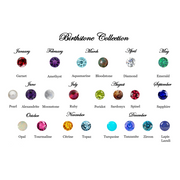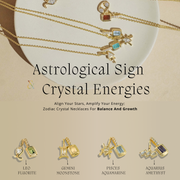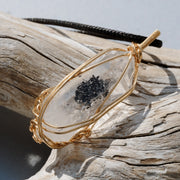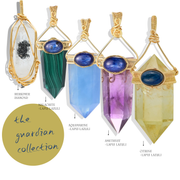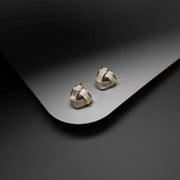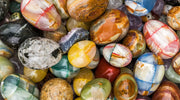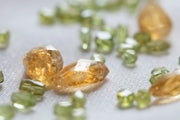Opal History
Ancient Origins
Opal is one of the most mesmerizing and mysterious gemstones in the world, admired for its dazzling play of color that seems to capture the entire spectrum of light. Its name comes from the Sanskrit word upala, meaning “precious stone,” and the Greek opallios, which means “to see a change in color.” Ancient Romans believed opal symbolized purity and hope, calling it the “Queen of Gems.” They cherished it as a lucky talisman that combined the virtues of all gemstones due to its ever-changing colors.

Cultural Significance
Opal has captivated civilizations across continents for thousands of years. In ancient Arabia, people believed opals fell from the heavens during lightning storms, trapping the flashes of lightning within them. Australian Aboriginal legends describe opal as a creator’s footprint that touched the earth, bringing harmony and beauty. During the Middle Ages, opal was considered a stone of good fortune, especially for those with fair hair or light eyes, as it was thought to enhance their natural beauty.

Symbolic Uses Through History
Opal’s iridescent glow made it a symbol of imagination, inspiration, and emotional expression. While it briefly gained a reputation for bad luck in 19th-century Europe (thanks to a novel’s superstition), it has long since reclaimed its status as a gem of mystery and transformation. Today, opal represents creativity, authenticity, and spiritual awakening—mirroring the depth and brilliance of the human soul.

Table of contents

Origin
Australia – The world’s primary source of opal, producing over 90% of global supply. Australian opals, especially from Lightning Ridge and Coober Pedy, are famous for their brilliant play-of-color and durability.
Ethiopia – Known for its hydrophane opals that display vivid flashes of green, red, and orange; these stones are light and absorb moisture, giving them a unique translucence.
Mexico – Renowned for fire opals with fiery orange and red tones that exhibit a warm, inner glow even without a traditional play-of-color.
Feature
Chemical Formula: SiO₂·nH₂O — opal is a hydrated amorphous form of silica, containing varying amounts of water within its structure.
Mohs Hardness: Ranging from 5.5 to 6.5, opal is relatively soft and should be handled carefully to avoid scratching or drying out.
Color: Opal can display nearly every color imaginable, from milky white to vivid reds, greens, and blues. The famous “play-of-color” effect occurs when light diffracts through tiny silica spheres within the stone, creating rainbow-like flashes.
Symbolism: Opal represents creativity, emotional freedom, and transformation. Spiritually, it enhances intuition, imagination, and authenticity—helping the wearer embrace their true self.
-
Chakra:
Crown Chakra (Sahasrara): Promotes spiritual awareness and connection to higher consciousness.
Heart Chakra (Anahata): Encourages love, empathy, and emotional healing.
-
Zodiac:
Libra
Scorpio
Benefits
Emotional Healing
Opal is known for amplifying emotions and revealing one’s true feelings. It encourages self-reflection and emotional honesty, helping individuals heal from heartbreak and release past trauma. By bringing emotions to the surface, it allows for transformation and renewal.
Creativity and Inspiration
Often called the “Artist’s Stone,” opal enhances creativity, imagination, and originality. It inspires poets, musicians, and visionaries to express their ideas freely. Its fluid, shifting colors mirror the creative process—unpredictable, beautiful, and ever-changing.
Love and Passion
Opal carries strong associations with love and desire. It deepens emotional connections, rekindles passion, and fosters intimacy. In ancient times, opal was believed to strengthen loyalty and protect lovers from infidelity.
Protection and Balance
In metaphysical traditions, opal is a powerful protective stone that absorbs negative energy and shields the aura. It balances mood swings and stabilizes emotions, making it an excellent companion for those seeking harmony in both relationships and personal growth.
Spiritual Awakening
Opal enhances spiritual awareness and connection to one’s higher self. It opens the Crown Chakra, facilitating insight, intuition, and connection to the divine. Many use opal during meditation to access deeper levels of consciousness and emotional release.
Type
White Opal
Also known as “milky opal,” this type features a soft, creamy base color with subtle flashes of rainbow hues. Found mostly in South Australia, white opal symbolizes peace, purity, and emotional healing.
Black Opal
Black opal, the rarest and most valuable variety, displays a dark body tone that dramatically enhances its vibrant play-of-color. Sourced mainly from Lightning Ridge, it represents mystery, power, and protection.
Fire Opal
Fire opal, primarily from Mexico, glows with vivid red, orange, and yellow tones—even without play-of-color. It embodies passion, energy, and creativity, igniting motivation and courage in the wearer.
Boulder Opal
This type forms naturally within ironstone rock, displaying rich veins of color across a dark matrix. Mined in Queensland, Australia, it symbolizes stability and emotional resilience while preserving opal’s beauty and fire.
Ethiopian Opal
Ethiopian or “Welo” opal is prized for its light body and dynamic flashes of color. It has hydrophane properties, meaning it can absorb water, temporarily changing its appearance. It represents transformation and adaptability.
Care & Maintenance
Cleaning
Clean opal gently using a soft, damp cloth. Avoid ultrasonic cleaners, chemicals, or soaking in water, especially for hydrophane opals, which can absorb moisture and alter their appearance.
Storage
Store opal in a cool, slightly humid environment to prevent dehydration and cracking. Keep it separate from harder gemstones in a soft pouch or lined box. Placing a damp cotton pad nearby can help maintain moisture levels.
Handling
Avoid exposing opal to heat, dry air, or direct sunlight for extended periods. Always remove opal jewelry before exercising, showering, or using lotions and perfumes to prevent dullness or surface damage.
FAQs
Q: Is opal a birthstone?
A: Yes, opal is the traditional birthstone for October, symbolizing hope, creativity, and emotional expression.
Q: Why does opal display so many colors?
A: The play-of-color in opal is caused by diffraction of light through microscopic silica spheres within the stone, producing a rainbow-like effect.
Q: Is opal unlucky?
A: No—this is a myth from 19th-century literature. In reality, opal has long been considered a stone of good fortune, love, and inspiration.
Q: Can opal dry out or crack?
A: Yes, opals contain water, and if they lose moisture too quickly, they can develop cracks. Storing them in a stable, humid environment helps prevent this.
Q: What does opal symbolize spiritually?
A: Opal symbolizes transformation, intuition, and emotional freedom. It connects the mind and heart, encouraging authenticity and creative expression.
Final Thoughts
Opal: Benefits, Properties and Meaning of the Stone reveals why this gem has been treasured across centuries for its unmatched beauty and emotional depth. Its shifting spectrum of colors reflects the ever-changing nature of life and emotion—reminding us to embrace creativity, authenticity, and spiritual growth. Whether worn for its beauty, used in meditation, or cherished as a talisman, opal remains one of the most enchanting stones on Earth. It embodies transformation, love, and inspiration—a gemstone that truly mirrors the magic of the human spirit.

